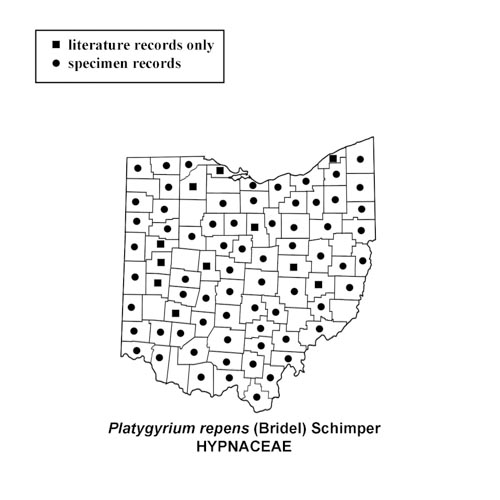Platygyrium repens
“flat brocade moss”
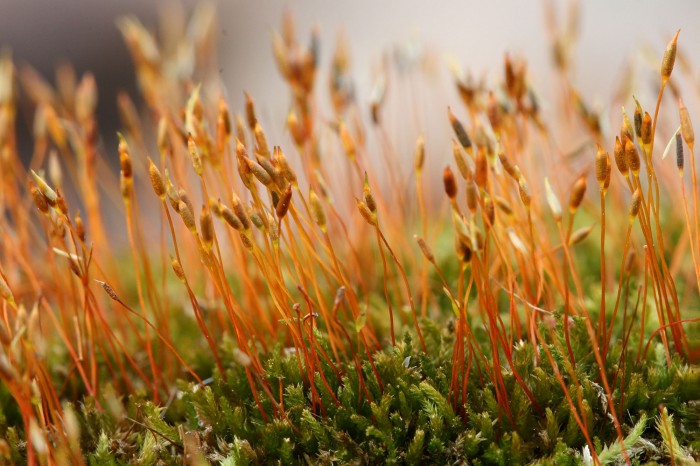
Platygyrium repens at A.W. Marion State Park, Pickaway County, Ohio. December 29, 2007.
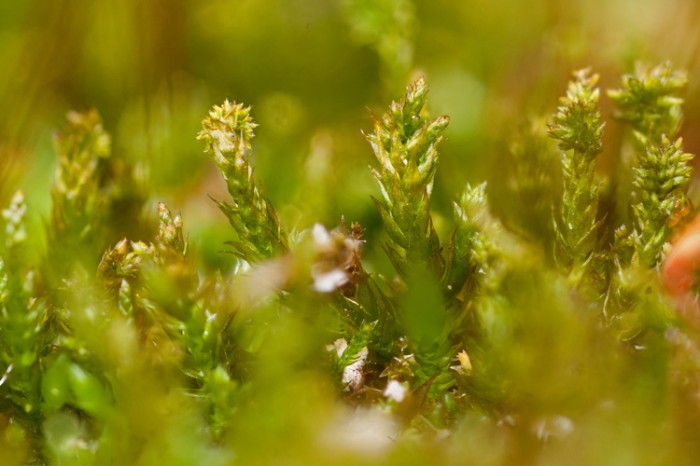
Platygyrium repens with brood bodies at Leibert Conservation Area, Delaware County, Ohio. December 18, 2012.

Platygyrium repens stem with leaves.

Platygyrium repens propagula.
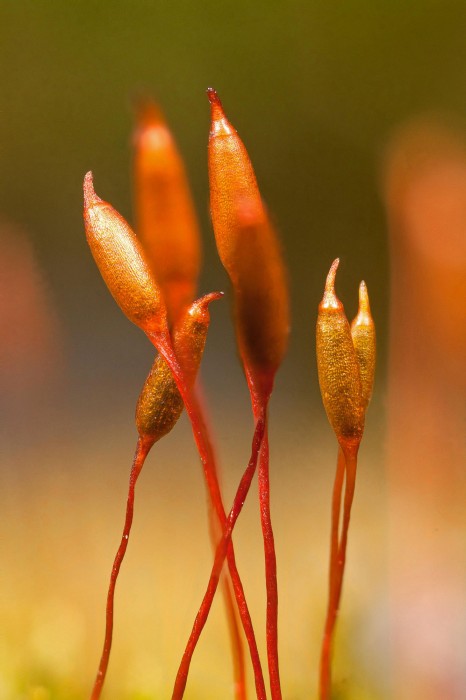
Platygyrium repens sporophytes.
Leibert Conservation Area. December 18, 2012.

Platygyrium repens leaf.

Platygyrium repens leaf base.
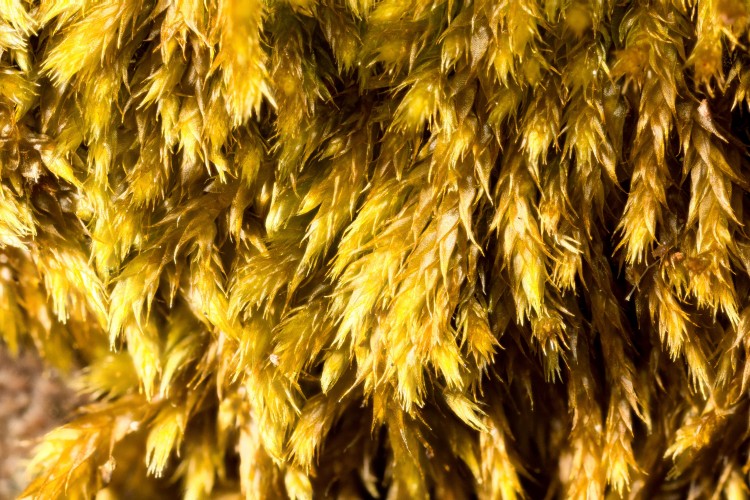
Platygyrium repens gametophytes at Kraus Woods. Delaware County, Ohio. February 15, 2015.
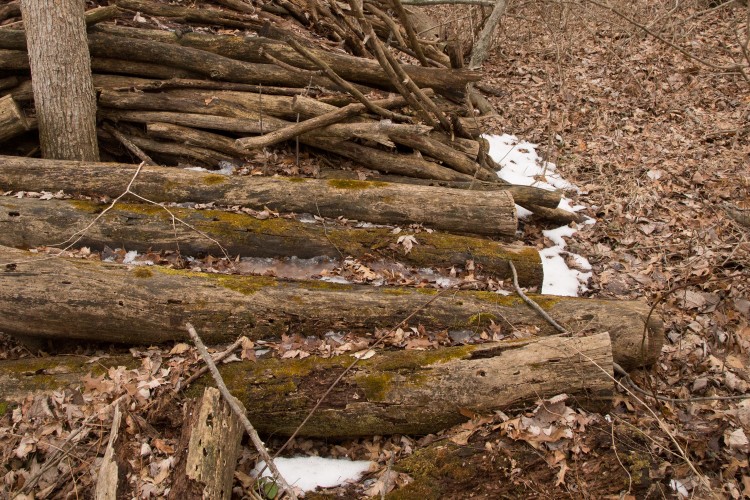
Platygyrium repens on logs at Kraus Woods. Delaware County, Ohio. February 15, 2015.
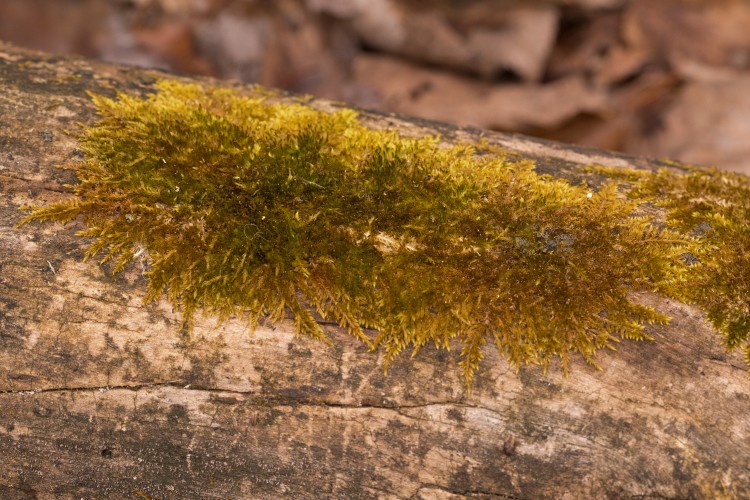
Platygyrium repens at Kraus Woods. Delaware County, Ohio. February 15, 2015. Note the darker green center of the mat surrounded by yellowish green stems and branches.
How to recognize oil spill moss: Platygyrium repens forms thin mats on trees and logs with short ascending branches. It has tiny leaves, about 1 mm long, with short double ribs at the base of the leaf; the leaves are usually pressed tightly to the stem and branches under dry conditions. The central area of the mat often looks very dark green as though it had oil spilled on it. Examination with a hand lens usually reveals a cluster of tiny brood branchlets at the tips of the branches. When these fall off, if they arrive in a good place, they will grow into a new plants. If you find a moss on trees or logs with the brood branchlets, you can give it a tentative name of Platygryium repens. This should be checked under a compound microscope to be sure that the leaf characteristics are right. Look for the short double ribs, and the alar cells, at the base of the leaf edges; these cells are almost square-shaped, with 10 to 20 of them ascending up the marginal edge.
Where to find oil spill moss: Look for it on trees and logs in woods and forests. This species rarely grows on rock in Ohio, and when it does it often has no brood branchlets, but it may have sporophytes.

